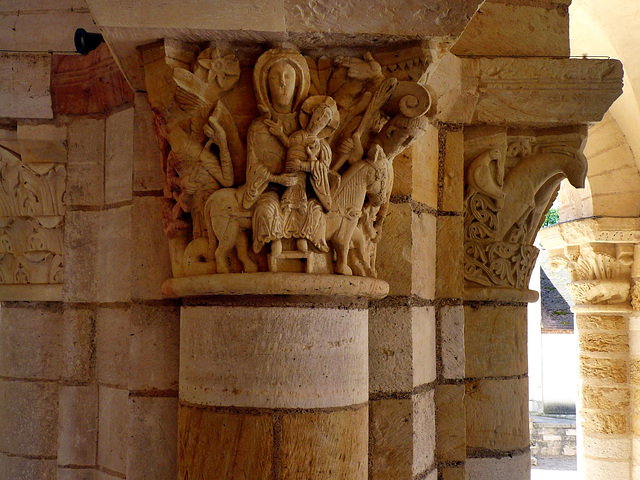Saint-Benoît-sur-Loire - Abbey
Saint-Benoît-sur-Loire - Abbey
Saint-Benoît-sur-Loire - Abbey
Saint-Benoît-sur-Loire - Abbey
Saint-Benoît-sur-Loire - Abbey
Saint-Benoît-sur-Loire - Abbey
Saint-Benoît-sur-Loire - Abbey
Saint-Benoît-sur-Loire - Abbey
Saint-Benoît-sur-Loire - Abbey
Saint-Benoît-sur-Loire - Abbey
Saint-Benoît-sur-Loire - Abbey
Saint-Benoît-sur-Loire - Abbey
Saint-Benoît-sur-Loire - Abbey
Saint-Benoît-sur-Loire - Abbey
Saint-Benoît-sur-Loire - Abbey
Saint-Benoît-sur-Loire - Abbey
Saint-Benoît-sur-Loire - Abbey
Germigny-des-Prés - Oratory
Germigny-des-Prés - Oratory
Germigny-des-Prés - Oratory
Germigny-des-Prés - Oratory
Germigny-des-Prés - Oratory
Germigny-des-Prés - Oratory
Saint-Benoît-sur-Loire - Abbey
Saint-Benoît-sur-Loire - Abbey
Saint-Benoît-sur-Loire - Abbey
Saint-Benoît-sur-Loire - Abbey
Saint-Benoît-sur-Loire - Abbey
Saint-Benoît-sur-Loire - Abbey
Saint-Benoît-sur-Loire - Abbey
Saint-Benoît-sur-Loire - Abbey
Saint-Benoît-sur-Loire - Abbey
Saint-Benoît-sur-Loire - Abbey
Saint-Benoît-sur-Loire - Abbey
Saint-Benoît-sur-Loire - Abbey
Saint-Benoît-sur-Loire - Abbey
Chartres - Cathédrale Notre-Dame
Chartres - Cathédrale Notre-Dame
Chartres - Cathédrale Notre-Dame
Chartres - Cathédrale Notre-Dame
Chartres - Cathédrale Notre-Dame
Chartres - Cathédrale Notre-Dame
Chartres - Cathédrale Notre-Dame
Chartres - Cathédrale Notre-Dame
Chartres - Cathédrale Notre-Dame
Location
See also...
Keywords
Authorizations, license
-
Visible by: Everyone -
All rights reserved
-
193 visits
Saint-Benoît-sur-Loire - Abbey


The abbey at Saint-Benoît-sur-Loire (originally known as Fleury Abbey) was founded on the banks of the Loire river mid 7th century. It is one of the oldest abbeys of the Benedictine rule in France.
The story starts in 672, when some of its monks traveled to Montecassino (Italy), dug up the remains of St. Benedict of Nursia (+ 547) and his sister St. Scholastica and brought them home. After the relics had reached at Fleury Abbey it which was renamed Saint-Benoît-sur-Loire - and due to the relics became a major place of pilgrimage. Of course, this did not help when the Normans rowed up the Loire and burned the buildings of the monastery. But the convent recovered and rebuilt.
A famous school and a scriptorium existed here in the late 10th century.
The erection of the church started around 1071. When the church was consecrated in 1108, the long nave was not completed.
The abbey thrived, but times got rougher. In 1562, the abbey was pillaged by Huguenots. The buildings were restored, but looted and destroyed again during the French Revolution. Saint-Benoît's monks left the abbey and so the history of the convent ended after more than 1100 years.
The abbey church had escaped destruction and got restored in the 19th century. In 1944, the convent was refounded the abbey buildings were rebuilt by Benedictine monks after World War II. So the history of the convent was just interrupted for about 150 years.
"Tour de Gauzlin", the massive porch tower, erected from 1020 on, serves as a narthex for the west entrance. The columns are decorated with interesting capitals, that were probably carved around 1080. One artist, who worked here, was Unbertus. He left a signature.
Here is the "Flight into Egypt".
Some medieval artists placed the virgin on very long donkeys (eg Arles, Le Boulou. Maybe it was thought to be more comfortable. An idea, that in modern times led to the construction of stretch limousines.
The story starts in 672, when some of its monks traveled to Montecassino (Italy), dug up the remains of St. Benedict of Nursia (+ 547) and his sister St. Scholastica and brought them home. After the relics had reached at Fleury Abbey it which was renamed Saint-Benoît-sur-Loire - and due to the relics became a major place of pilgrimage. Of course, this did not help when the Normans rowed up the Loire and burned the buildings of the monastery. But the convent recovered and rebuilt.
A famous school and a scriptorium existed here in the late 10th century.
The erection of the church started around 1071. When the church was consecrated in 1108, the long nave was not completed.
The abbey thrived, but times got rougher. In 1562, the abbey was pillaged by Huguenots. The buildings were restored, but looted and destroyed again during the French Revolution. Saint-Benoît's monks left the abbey and so the history of the convent ended after more than 1100 years.
The abbey church had escaped destruction and got restored in the 19th century. In 1944, the convent was refounded the abbey buildings were rebuilt by Benedictine monks after World War II. So the history of the convent was just interrupted for about 150 years.
"Tour de Gauzlin", the massive porch tower, erected from 1020 on, serves as a narthex for the west entrance. The columns are decorated with interesting capitals, that were probably carved around 1080. One artist, who worked here, was Unbertus. He left a signature.
Here is the "Flight into Egypt".
Some medieval artists placed the virgin on very long donkeys (eg Arles, Le Boulou. Maybe it was thought to be more comfortable. An idea, that in modern times led to the construction of stretch limousines.
- Keyboard shortcuts:
Jump to top
RSS feed- Latest comments - Subscribe to the comment feeds of this photo
- ipernity © 2007-2024
- Help & Contact
|
Club news
|
About ipernity
|
History |
ipernity Club & Prices |
Guide of good conduct
Donate | Group guidelines | Privacy policy | Terms of use | Statutes | In memoria -
Facebook
Twitter

Sign-in to write a comment.